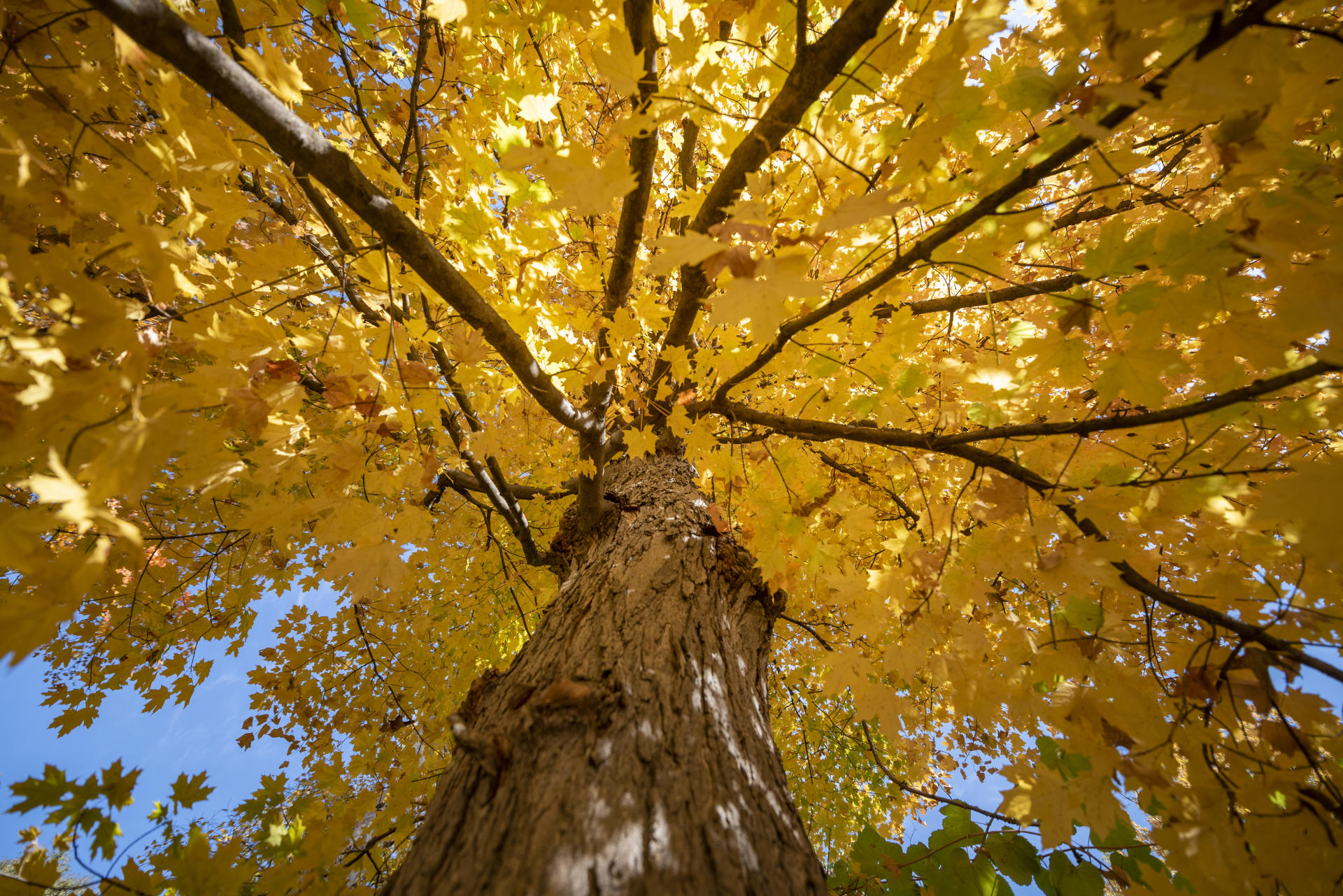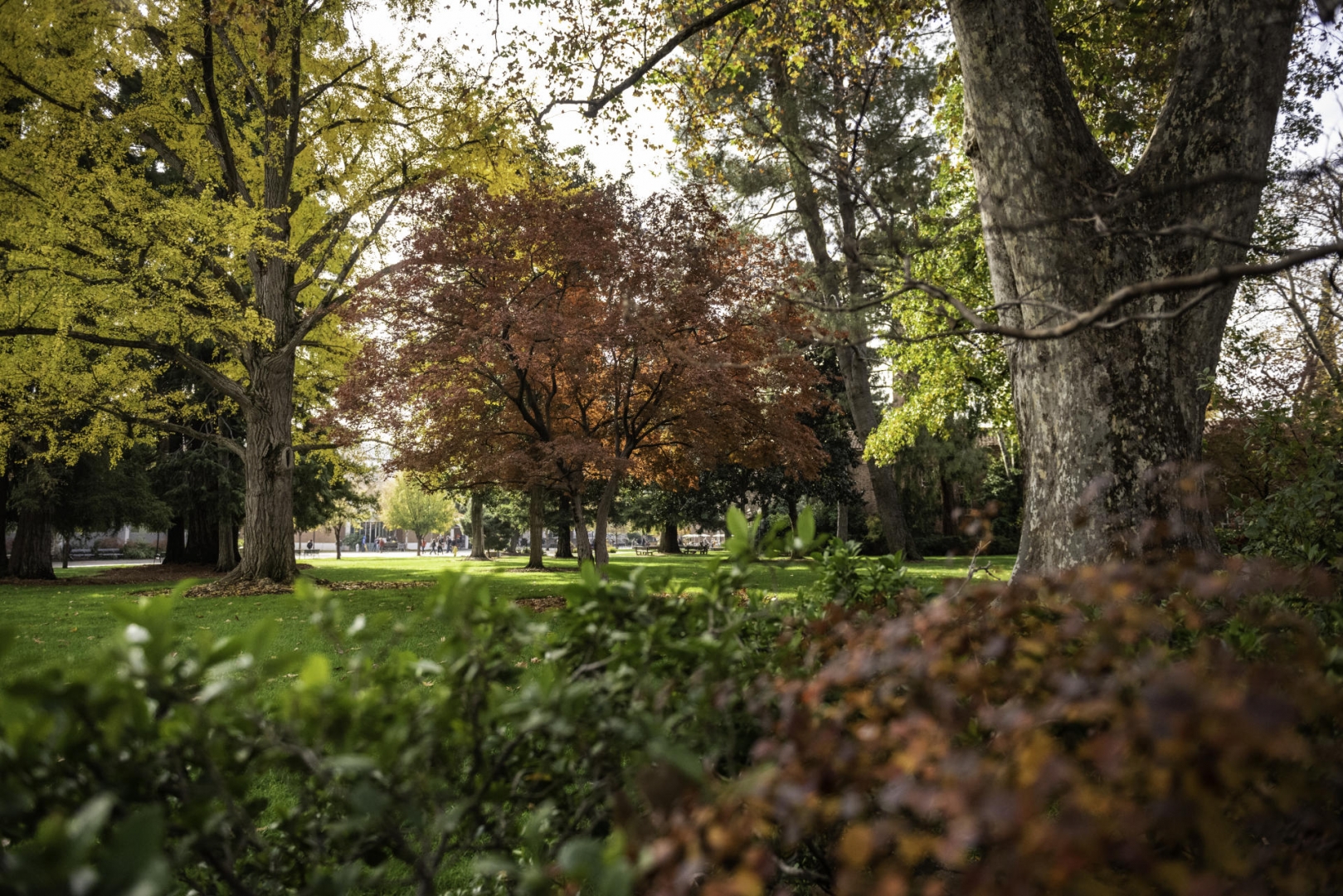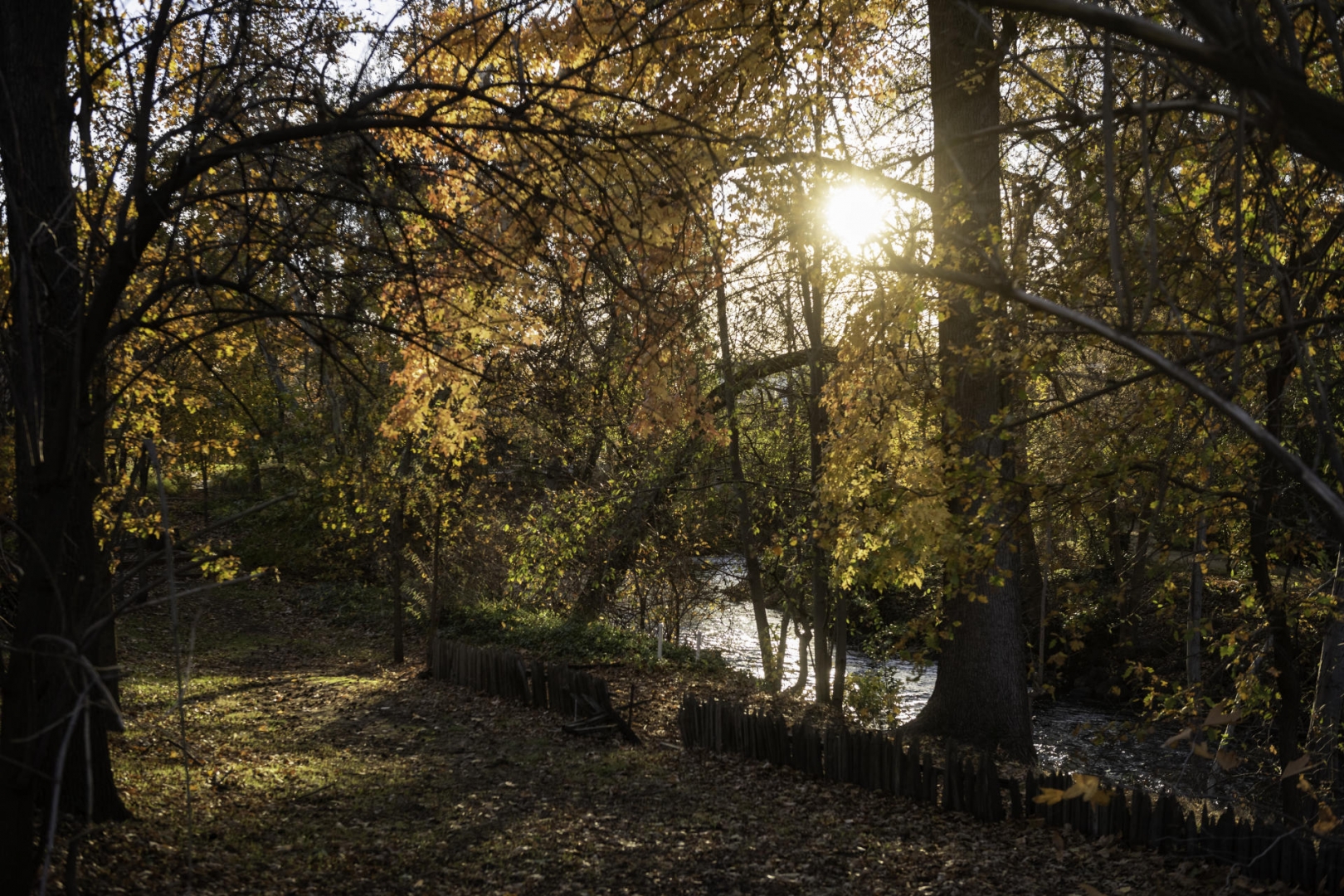Arbor Day Foundation Honors CSU, Chico for Tree Conservation

The leaves change a vibrant yellow for the Fall season on Wednesday, November 6, 2019 in Chico, Calif. (Jason Halley/University Photographer/CSU Chico)
The trees on the California State University, Chico campus are an evergreen source of pride—and the University was recently honored for how it manages, maintains and engages with its beloved arboretum.
Last month, the Arbor Day Foundation listed CSU, Chico as a 2019 Tree Campus USA School—the University’s second consecutive such designation. Mike Alonzo, from CSU, Chico’s Facilities Management and Services (FMS), directs the maintenance of the campus’s 2,700 catalogued trees across its 132 acres. He feels the Arbor Day Foundation honor validates the time, effort and investment the University has made to care for its collection of trees, which include more than 200 species.
“As a University known for its natural beauty, the recognition further bolsters the appeal and distinction of our campus to know that we are nationally recognized for our tree collection and the care that we give it,” he said. “The designation also pushes us to be better stewards of the campus landscape and tree inventory to ensure its reputation and recognition for the decades to come.”
Tree Campus USA recognitions are handed out annually and celebrate colleges and universities that effectively manage their campus trees; develop connectivity with the community beyond campus borders to foster healthy, urban forests; and strive to engage their student population utilizing service-learning opportunities centered on campus and community forestry efforts.

“If ever there was a time for trees, now is that time. Communities worldwide are facing issues with air quality, water resources, personal health and well-being, and energy use,” said Lauren Weyers, Arbor Day Foundation program coordinator in a letter affirming the recognition. “California State University, Chico State is stepping up to do its part. As a result of your commitment to effective urban forest management, you are helping to provide a solution to these global challenges. … Your diligence in improving the environment and quality of life at your school contributes to a healthier, more sustainable world for us all.”
A total of 383 total US higher education institutions were named to the list. CSU, Chico is one of 16 California higher education institutions to be designated, and one of only eight CSU campuses, including Cal Poly San Luis Obispo; CSU, Channel Islands; Cal Maritime; CSUN; Cal State San Bernardino; CSU, Dominguez Hills; and Sacramento State.
The University is considering ways to ensure the future health of its trees as they grow and age. The entire CSU, Chico campus is an officially recognized arboretum, dedicated in 1982 by then-President Robin Wilson. In 2016, FMS invested in a tree maintenance database called Arbor Pro, a program that provided a baseline assessment and GPS location of the 2,700 trees on campus—performed by experienced and certified arborists.
“Arbor Pro has been a great tool to guide our maintenance practices by objectively prioritizing trees based on condition and location,” Alonzo said. “As a result, we have seen a decrease in tree failures related to storms and have cleared lots of potentially hazardous growth and over-mature trees—trees in decline—from the campus.”

In an attempt to aid members of the campus community and thousands of annual campus visitors who want to know more about the University’s arboretum, discussions to develop a self-guided tree tour have also taken place, in which the campus trees would contain tags that, when engaged with via a smartphone app, would provide scientific and anecdotal information for the user. Additionally, the student-run GeoPlace Mapping Lab (from the Department of Geography and Planning) is working with Alonzo’s team to link the Arbor Pro GPS data into an augmented reality app to show trees and their attributes in real-time—including when to provide the trees with extra care and maintenance. These features, however, will take time to bear fruit.
“Until those become more mainstream, we will continue to focus our efforts on the more traditional, hands-on approach—trimming, training and monitoring our trees,” Alonzo said.
To Alonzo, and many others, the collection of campus trees is one of the University’s greatest assets. And when a tree is lost, the ripple effect can be felt beyond the vacant space where it was once rooted.
“If a window in a building breaks, you order a replacement,” he said. “However, if you lose a mature valley oak, it will take a lifetime to replace—not to mention the potential loss of habitat. Therefore, we consider it critically important to preserve the natural beauty of the campus landscape and trees.”


